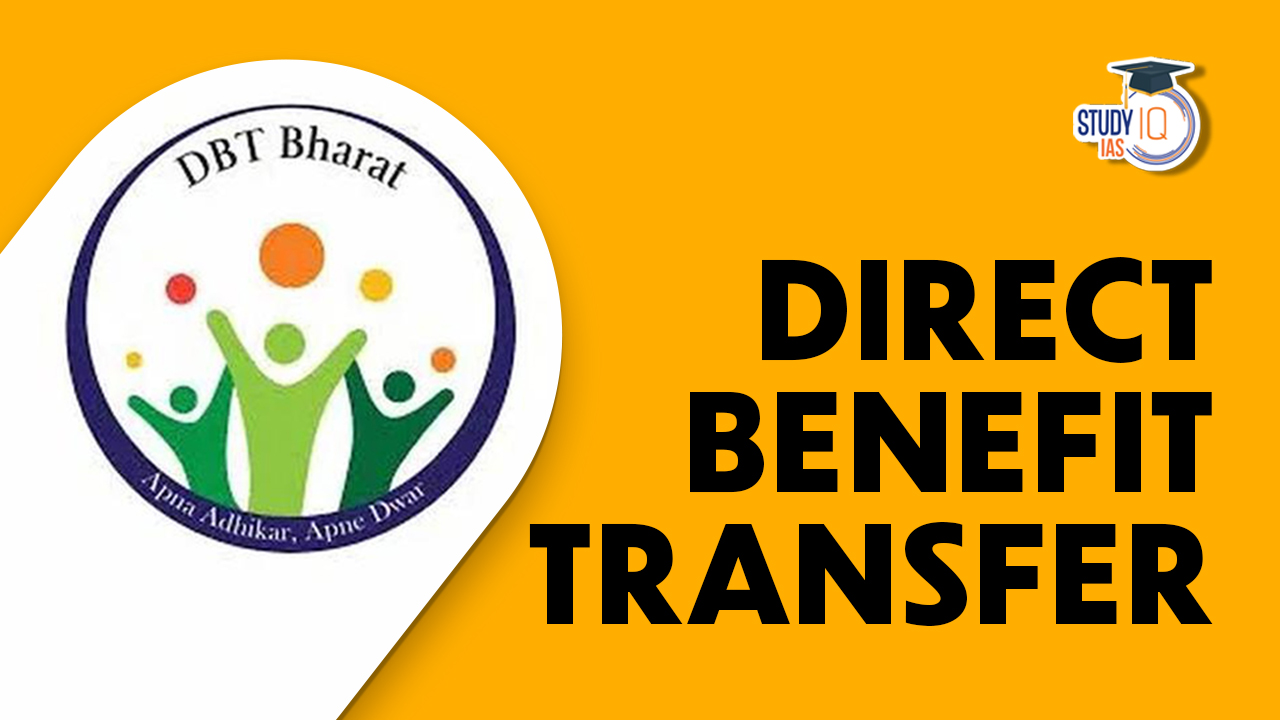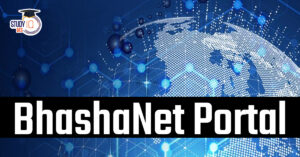Table of Contents
Direct Benefit Transfers (DBT) and cash transfer schemes have gained significant traction in India. Around 15 states governed by various political parties have implemented versions of unconditional cash transfers, targeting women and marginalized sections of society.
Direct Benefit Transfer (DBT)
Direct Benefit Transfer (DBT) is an initiative launched by the Government of India on January 1st, 2013, to reform the government delivery system. It is designed to streamline and expedite the transfer of information and funds to beneficiaries while reducing fraudulent practices within the system. DBT directly transfers government subsidies, benefits, and assistance to the intended recipients, ensuring a more efficient and transparent delivery mechanism.
Components of Direct Benefit Transfer (DBT)
- Key components of DBT implementation include the Beneficiary Account Validation System, a robust payment and reconciliation platform integrated with the Reserve Bank of India (RBI), National Payments Corporation of India (NPCI), and various public and private sector banks.
- Under DBT, there are 310 schemes from 53 ministries, including notable ones such as Pradhan Mantri Fasal Bima Yojana, National Food Security Mission, Pradhan Mantri Krishi Sinchai Yojana, PM KISAN, Swachh Bharat Mission Gramin, Atal Pension Yojana, and National AYUSH Mission.
Current Situation of DBT
- Widespread Adoption: Around 15 states, governed by different political parties, have implemented cash transfer schemes targeted at women. Sixty per cent of India’s women population now resides in these states.
- Fiscal Magnitude: Nearly 100 million women receive direct cash transfers annually, amounting to approximately $25 billion (₹2 lakh crore), roughly 10% of the annual revenue of state governments combined.
- DBT Success: The Direct Benefit Transfer (DBT) program, initiated in 2013, has disbursed over ₹5.5 lakh crore in subsidies and benefits to over 700 million individuals since inception, significantly reducing leakages.
- Schemes Targeting Women:
- Ladli Lakshmi Yojana (MP): Incentives for girl child education and marriage.
- KCR Kit Scheme (Telangana): Financial assistance for women post-pregnancy.
- Mukhya Mantri Kanya Sumangala Yojana (UP): Conditional cash transfers to girl children for education and health.
Direct Benefit Transfer (DBT) Pros and Cons
Direct Benefit Transfer (DBT) enhances welfare delivery by streamlining fund transfers and increasing transparency. However, it faces challenges such as transaction costs and technical limitations.
| Cons of Direct Benefit Transfer (DBT) |
Pros of Direct Benefit Transfer (DBT)
|
| Transaction costs: DBT can involve transaction costs, such as the cost of opening and maintaining bank accounts and the cost of digital payment processing. |
Reduced leakages: DBT eliminates the need for middlemen, which can help to reduce leakages in government welfare programs.
|
| Technical challenges: DBT requires a reliable and robust electronic payment infrastructure. In some cases, this infrastructure may not be available in rural areas or among marginalized populations. |
Increased transparency: DBT transactions are recorded electronically, which makes it easier to track and monitor the flow of funds.
|
| Data security and privacy concerns: DBT involves the collection and storage of sensitive personal data. This data needs to be protected from unauthorized access and misuse. |
Improved targeting: DBT can be used to target welfare benefits more effectively to the intended beneficiaries.
|
| Challenges in reaching the last mile: DBT can be challenging to implement in remote areas where there is no access to banking or digital payment infrastructure. |
Increased financial inclusion: DBT can help to increase financial inclusion by encouraging people to open bank accounts and use digital payment methods.
|
| Opportunity costs: DBT may divert resources away from other important social programs. |
Improved efficiency: DBT can help to improve the efficiency of government welfare programs by reducing the paperwork and administrative costs associated with traditional welfare delivery mechanisms.
|
Arguments in Favour of Monetary Transfer Policies
- Empowerment of Women: Cash transfers to women enhance their financial independence and decision-making power, fostering gender equality.
- Poverty Alleviation: Direct cash injections help the poorest families meet basic needs, reducing abject poverty.
- Boost to Consumption: Unconditional cash transfers increase household consumption, stimulating demand in the economy.
- Eg., The Economic Survey 2022 noted that rural consumption grew by 10% in states implementing cash transfer schemes, as beneficiaries used funds for food, clothing, and education.
- Efficient Governance: Cash transfers bypass intermediaries, reducing corruption and leakages in welfare delivery systems.
- Flexibility in Spending: Beneficiaries can prioritize spending according to their needs, ensuring better resource utilization.
- Economic Multiplier Effect: Cash transfers can indirectly contribute to local economic growth by increasing spending in rural and underserved areas.
Read about: Banking Ombudsman
Direct Benefit Transfer (DBT) in Agriculture
DBT in agriculture aims to streamline the delivery of subsidies, grants, and other forms of assistance, ensuring that the benefits reach the intended recipients efficiently. By eliminating intermediaries and reducing leakages, DBT in agriculture promotes transparency, accountability, and targeted allocation of resources.
It enables farmers to access financial aid for various purposes such as procurement of fertilizers, seeds, irrigation, machinery, and other agricultural inputs, thereby supporting their livelihoods and boosting agricultural productivity. Some examples highlight how DBT in agriculture is employed in India to provide financial support, subsidies, and incentives directly to farmers’ bank accounts, enabling them to adopt modern agricultural practices, mitigate risks, and enhance their overall productivity include:
Pradhan Mantri Fasal Bima Yojana (PMFBY)
Under this scheme, premium subsidies and claim settlements are directly transferred to the bank accounts of farmers to provide them with insurance coverage against crop losses due to natural calamities, pests, or diseases.
Soil Health Card Scheme
Farmers receive financial assistance through DBT to avail soil health cards, which provide detailed information about the nutrient content of their soil. This helps them make informed decisions regarding fertilizers and enhances soil fertility management.
Pradhan Mantri Krishi Sinchayee Yojana (PMKSY)
DBT is utilized in PMKSY to provide financial assistance to farmers for the adoption of water-saving irrigation practices, including micro-irrigation systems. Subsidies and incentives are directly transferred to their bank accounts to promote efficient water usage in agriculture.
National Food Security Mission (NFSM)
Under NFSM, farmers receive direct financial support through DBT for promoting the production and distribution of quality seeds, enhancing farm productivity, and improving the availability of essential food crops in the country.
Paramparagat Krishi Vikas Yojana (PKVY)
DBT is used in PKVY to transfer financial assistance to farmers practicing organic farming methods. The funds are directly credited to their bank accounts, supporting the adoption of organic farming techniques and reducing the dependency on chemical inputs.
Read about: Non-Performing Assets
Challenges Associated with Direct Benefit Transfer (DBT)
The implementation of DBT faces several challenges which include:
- Fiscal Burden: The Reserve Bank of India highlighted that too many centrally-sponsored schemes are straining state budgets, reducing flexibility in state spending.
-
- Eg., The disbursement under these schemes surged from Rs 11,000 crore in 2021 to Rs 1,09,554 crore in 2024.
- Inflationary Pressures: Injecting large sums of money into the economy can lead to inflation, disproportionately affecting the poor.
- Short-Term Focus: Immediate fiscal costs are tangible, whereas benefits like empowerment and poverty reduction are long-term and intangible.
- Dependency Risk: Unconditional transfers might discourage work effort among certain beneficiaries, fostering dependency on government aid.
- Inefficiency in Targeting: Leakages, misidentification, and exclusion errors can result in benefits not reaching the truly needy.
- Neglect of Structural Reforms: Over-reliance on monetary transfers may divert attention from addressing deeper issues like unemployment, education, and healthcare.
Read about: India Post Payment Bank
Direct Benefit Transfer (DBT) Achievements
- Elimination of Fake Beneficiaries: The DBT program successfully removed fake beneficiaries and addressed leakages in the system.
- Targeted Subsidies: Benefits are directly transferred to citizens below the poverty line, ensuring a more targeted and efficient subsidy distribution.
- Government Expenditure Savings: Significant reduction in social-sector welfare expenditure, enabling the government to save resources.
- Transparency Enhancement: Direct transfer eliminates intermediaries, promoting transparency in the subsidy distribution process.
- Pilferage Reduction: Improved transparency through DBT has led to a decrease in pilferage during the distribution of Central Government-sponsored funds.
- Efficient Financial Assistance: DBT facilitates effective and transparent financial assistance to farmers with lower transaction costs, enhancing overall efficiency.
Direct Benefit Transfer Reforms Needed
To further enhance the effectiveness of DBT, certain reforms are needed:
Systematic Innovation
Focusing on empowering the innovation system within DBT will be crucial to meet the diverse needs of India’s population and ensure balanced, equitable, and inclusive growth.
Enhanced Accessibility
Urgent measures should be taken to increase the accessibility of enrolment points, particularly in rural and peri-urban areas. This would ensure that citizens across schemes can easily access and enroll in DBT services.
Unified Grievance Redressal
Establishing a common grievance redressal cell for all DBT schemes at the state, district, and block levels would streamline the process of addressing beneficiaries’ issues and provide them with a centralized platform for resolving grievances.
Leasing Initiatives
Exploring leasing options can be beneficial for both tenant and reverse-tenant farmers. It would enable them to operate consolidated land holdings while allowing landowners to engage in non-agricultural employment without the risk of losing their lands.By implementing these reforms, DBT can be strengthened, ensuring efficient delivery of benefits, addressing issues faced by beneficiaries, and promoting inclusive development across the country.
Read about: Micro ATMs
Aadhaar for Direct Benefit Transfer (DBT)
Aadhaar is a 12-digit unique identity number issued to all Indian residents by the Unique Identification Authority of India (UIDAI). Aadhaar is used for a variety of purposes, including Direct Benefit Transfer (DBT). Aadhaar is used to link the bank accounts of beneficiaries to their Aadhaar numbers so that benefits can be transferred directly to their accounts. Here are some specific examples of how Aadhaar is being used for DBT in India:
- LPG subsidy: The government of India uses Aadhaar to transfer LPG subsidies directly to the bank accounts of beneficiaries. This has helped to reduce leakages and improve the efficiency of the LPG subsidy program.
- MNREGA: The government of India uses Aadhaar to transfer wages to the bank accounts of MNREGA workers. This has helped to reduce corruption and improve the transparency of the MNREGA program.
- Pradhan Mantri Jan Dhan Yojana (PMJDY): The PMJDY is a government program that provides financial inclusion to low-income households. The government of India uses Aadhaar to link the bank accounts of PMJDY beneficiaries to their Aadhaar numbers. This has helped to ensure that benefits are transferred directly to the bank accounts of beneficiaries.
Way Forward
- Calibrated Implementation: Limit annual increases in cash transfer budgets to 5% while focusing on targeted expansions.
- Better Targeting Mechanisms: Leverage the Aadhaar-PAN linkage and recent census data for accurate identification of beneficiaries.
- Focus on Complementary Policies: Combine cash transfers with skill development programs like PM Kaushal Vikas Yojana, ensuring long-term income security.
- Fiscal Discipline: Dedicate revenue from additional cess (e.g., infrastructure cess) to fund cash transfers, maintaining fiscal deficit below the 3% target.
- Periodic Impact Assessment: Initiate annual independent audits of schemes to measure their social return on investment (SROI).
- Encourage Women-Centric Initiatives: Link cash transfers with self-help group activities like those under the National Rural Livelihood Mission (NRLM) to foster entrepreneurship among women.


 Growth in Gold Loans and NPAs, Reasons a...
Growth in Gold Loans and NPAs, Reasons a...
 New Phase of Operation Chakra to Combat ...
New Phase of Operation Chakra to Combat ...
 Bhashanet Portal : Empowering Multilingu...
Bhashanet Portal : Empowering Multilingu...





















